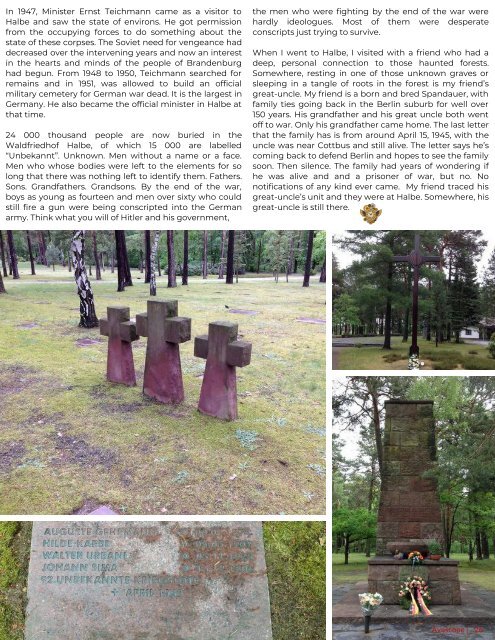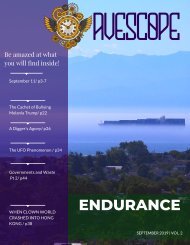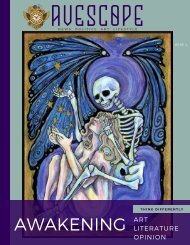Avescope HORROR
Avescope is back with our amazingly scary THIRD issue! With amazing fiction from Anike Kirsten and Guendolen Jacobs! Art from Joanna Hatton, (our brilliant cover is one of hers!) Justine Oh Me, Blackbird's Photography, and Catherine Jackson. Articles from Catherine Clark, David Simon, and Auguste von Osterode. LD Towers continues her serialized novel, Sal Adin! What can you read about? Of course, we covered Greta Thunberg. Governments and waste? Oh yes! The difficulty of saying 'No' when in a romantic encounter. A little military history with the Battle of Halbe.
Avescope is back with our amazingly scary THIRD issue! With amazing fiction from Anike Kirsten and Guendolen Jacobs! Art from Joanna Hatton, (our brilliant cover is one of hers!) Justine Oh Me, Blackbird's Photography, and Catherine Jackson. Articles from Catherine Clark, David Simon, and Auguste von Osterode. LD Towers continues her serialized novel, Sal Adin!
What can you read about? Of course, we covered Greta Thunberg. Governments and waste? Oh yes! The difficulty of saying 'No' when in a romantic encounter. A little military history with the Battle of Halbe.
You also want an ePaper? Increase the reach of your titles
YUMPU automatically turns print PDFs into web optimized ePapers that Google loves.
In 1947, Minister Ernst Teichmann came as a visitor to<br />
Halbe and saw the state of environs. He got permission<br />
from the occupying forces to do something about the<br />
state of these corpses. The Soviet need for vengeance had<br />
decreased over the intervening years and now an interest<br />
in the hearts and minds of the people of Brandenburg<br />
had begun. From 1948 to 1950, Teichmann searched for<br />
remains and in 1951, was allowed to build an official<br />
military cemetery for German war dead. It is the largest in<br />
Germany. He also became the official minister in Halbe at<br />
that time.<br />
24 000 thousand people are now buried in the<br />
Waldfriedhof Halbe, of which 15 000 are labelled<br />
“Unbekannt”. Unknown. Men without a name or a face.<br />
Men who whose bodies were left to the elements for so<br />
long that there was nothing left to identify them. Fathers.<br />
Sons. Grandfathers. Grandsons. By the end of the war,<br />
boys as young as fourteen and men over sixty who could<br />
still fire a gun were being conscripted into the German<br />
army. Think what you will of Hitler and his government,<br />
the men who were fighting by the end of the war were<br />
hardly ideologues. Most of them were desperate<br />
conscripts just trying to survive.<br />
When I went to Halbe, I visited with a friend who had a<br />
deep, personal connection to those haunted forests.<br />
Somewhere, resting in one of those unknown graves or<br />
sleeping in a tangle of roots in the forest is my friend’s<br />
great-uncle. My friend is a born and bred Spandauer, with<br />
family ties going back in the Berlin suburb for well over<br />
150 years. His grandfather and his great uncle both went<br />
off to war. Only his grandfather came home. The last letter<br />
that the family has is from around April 15, 1945, with the<br />
uncle was near Cottbus and still alive. The letter says he’s<br />
coming back to defend Berlin and hopes to see the family<br />
soon. Then silence. The family had years of wondering if<br />
he was alive and and a prisoner of war, but no. No<br />
notifications of any kind ever came. My friend traced his<br />
great-uncle’s unit and they were at Halbe. Somewhere, his<br />
great-uncle is still there.<br />
<strong>Avescope</strong> | 26





